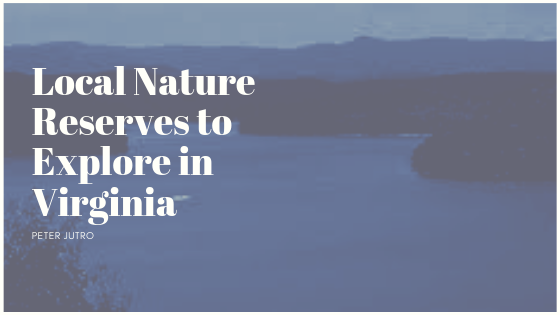Although there are the large nature reserves, the smaller nature reserves deserve just as much attention. There are many natural reserves and preserves in Virginia. Yet, many get the two confused. A natural reserve (also known as a nature reserve, nature preserve, biosphere or natural preserve) is a protected area due to its unique flora, fauna or geographical feature. It is “reserved” and managed for research. A nature preserve is when an area is “preserved” to keep alive and protect from injury or harm. For example, an area that is a designated pre-settlement and/or contains an endangered species area can be a nature preserve. The two are intertwined for the benefits of research and preservation. It is interesting that private landowners can designate their land as either a nature reserve or nature preserve.
The local nature reserves in Virginia will not disappoint. For those who love the outdoors, these nature reserves are full of beauty and provide opportunities to study geological formations, watersheds, biosystems and more. Let’s take a look at some of the gems of Fairfax County.
- Scott’s Run Nature Preserve — It’s dynamic terrain supports rare plants and is one of the rarest biological ecosystems in the mid-Atlantic region. You’ll find cliffs, waterfalls and bluffs that provide an exciting visit along with numerous trails of varying skill levels. Plus, there’s always an event going on at the site, including Spring Wildflower Walks, A Geology of Scott’s Run and A Wetlands Week-Long Summer Camp. It’s important to note that Scott’s Run flows into the Potomac River and has dangerous currents, underwater hazards and rapidly-rising waters.
- Fraser Preserve — This luscious area of the Piedmont region offers many trails, streams, a cold-water swamp, hardwoods, ponds, bluffs and more. Fraser Preserve was a gift from Mrs. George Fraser in 1975. It has a rich history as it was once inhabited by the Anacostan, Piscataway and Tauxenent tribes. It was part of a 5-million acre tract given to seven noblemen by King Charles I in 1649. In 1710, the land was passed to the Fairfax family and then onto Thomas Lee. The American University studies the reserve, and has recovered arrowheads and other tribal artifacts. Fraser Preserve contains 300 species of wildflowers and 110 bird species along with numerous mammal and amphibian species.
- Dyke Marsh Wildlife Preserve — Spanning over 485 acres, Dyke Marsh Wildlife Preserve is one of the largest freshwater wetlands in the Washington, D.C. metro area. You’ll have fun exploring the tidal marsh by boat or hiking the Haul Road trail to see the many wildlife. For bird watchers, there are bird walks each Sunday.
These reserves (although named preserve) provide a stark contrast to urban life. They are a wonderful way to learn about nature and ecosystems as well as how important they are to protect for future generations.

